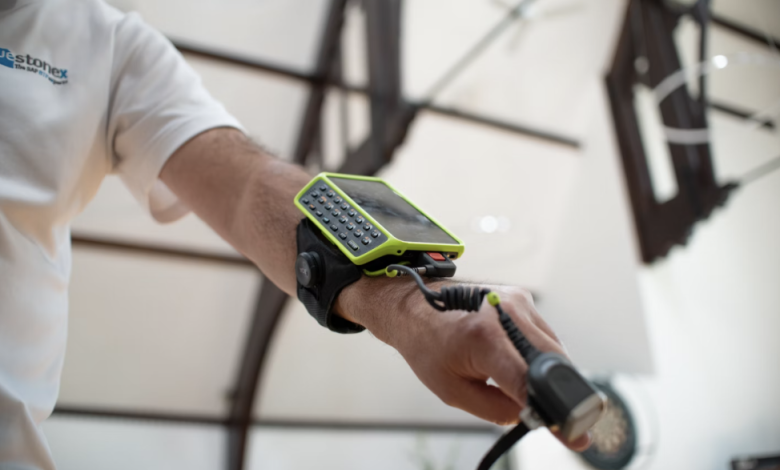
Sports is all about performance, speed and achievements from the very beginning of its origin. We watch it because it’s fun and entertaining and pushes the boundaries of human strength to maximum. Since the early Olympic games, every result was measured by the human eye. But now in 2025 any sports achievements are evaluated and measured in real time with wearable gadgets. From the smart wristbands to trackers on the chest, even clothing now is smart and full of different devices showing off-sides in football and lap time in Formula 1. They are used in training as well and transform it into a science of human body development.
Wearables in sports aren’t just a minor trend. Wearables are big and they’ve become essential for athletes of every level. Amateurs use them to balance intensity of their training and track recovery phases. Professional athletes use wearable devices to avoid fatigue and put their performance and technique to their peak. But with so many gadgets on the market there’s a crucial question: which devices truly deliver measurable improvement and which are just fancy toys.
From Tracking Steps to Tracking Systems
Early fitness trackers were very basic. They were capable of counting steps and maybe measuring heart rate. Some calculated calories burned but such calculations were way too far from the real numbers because they were based on average human characteristics which is not the case with professional athletes. But things have changed over the past decade. The modern wearable landscape is very different from what we used to think the industry can get us.
Now we see major advancements in biosensors backed with machine learning in even the smallest devices. Modern wearable tech allows athletes to monitor nearly every physiological system from cardiovascular load and muscular fatigue to hydration level and mental focus. Isn’t that great? Athletes of the past could just dream of such a level of understanding of the princesses inside their bodies.
Right now there are five major categories of wearable devices on the market:
- Smartwatches and fitness bands that are mostly used for tracking of heart rate, pace, and sleep. Pretty basic gadgets but still important for many.
- Heart-rate monitors and chest straps exist for high-precision cardiovascular measurement and are mostly used in professional sports.
- Power and motion sensors are highly popular among cyclists, runners, and lifters for analyzing movement efficiency in real-time.
- Recovery and sleep trackers are used literally by everyone who is interested in knowing their fatigue and sleep quality.
- Smart apparel and footwear with built-in sensors are used mostly in football for advanced biomechanics.
Let’s try to understand each type and where these devices can be used to improve performance of athletes.
Smartwatches
The smartwatch is one of the all-rounder when it comes to wearable tech. It is the most popular wearable gadget among athletes and casual tech users alike. Tens of famous brands like Apple, Garmin and Suunto produce high-end devices that work like miniature performance labs capable of identifying whether you’re training in aerobic, anaerobic, or threshold zones. Knowing this helps target training efficiency and performance.
Some models allow VO₂ max estimation that shows how well your body utilizes oxygen during exertion which is a key predictor of aerobic performance. Another handy feature is preventing overtraining by monitoring short-term and long-term workload that’ if paired with GPS accuracy, gives data with near-professional precision.
The best thing about these devices is that you can see patterns, notice performance plateaus and adjust programs accordingly. Modern watches also integrate with AI coaching platforms that learn your habits and adapt workouts. Combined with gamified apps like fun777, training becomes interactive and competitive because you can share your performance with your friends.
Heart-Rate Monitors and Chest Straps
While wrist sensors are tiny and useful, pro-level athletes still rely on chest straps for better accuracy and precision. The main reason why optical wrist sensors fail in competition is that they can lag during intense movement or when sweat interferes with contact. Chest straps use totally different technology so you won’t lose your data because of excessive sweating. They use electrical impulses to capture heart rate variability (HRV) and beat-to-beat precision.
Why does HRV matter? This metric reflects the balance between stress and recovery in the autonomic nervous system. A high HRV indicates readiness while low HRV signals fatigue or stress. Tracking HRV daily helps athletes schedule rest intelligently.
Advanced models now sync with smartphones and even perform breathing pattern analysis. Some systems integrate directly with cycling power meters or running pods to create full physiological profiles in real time.
Power Meters and Motion Sensors
Power meters are used heavily in cycling but now they’re entering the running, rowing, and even strength sports scene because of the level of data they are capable of providing. In running, foot pods or waist sensors calculate so-called running power, providing insights into stride length, ground contact time and vertical oscillation during training or competitions. This allows to fine-tune form and prevent overuse injuries.
In the gym, motion sensors attached to barbells or wrists track velocity and range of motion. This real-time feedback brings science into every rep. Coaches and trainers can now prescribe sessions based on output instead of guesswork, leading to smarter, safer progress.
Recovery and Sleep Trackers
The training load only tells half the story. Recovery defines whether the body can handle it. Devices like WHOOP, Oura Ring, and Garmin Recovery Index focus on sleep quality, HRV, body temperature, and respiration rate to determine readiness.
Each morning, these systems deliver a “readiness score,” quantifying how recovered you are from the previous day. This insight helps prevent burnout by aligning training intensity with recovery capacity.
Athletes who follow readiness data typically see:
- Fewer soft tissue injuries
- More consistent energy levels
- Improved cognitive performance
- Better long-term motivation
For instance, WHOOP’s data from millions of users shows that athletes sleeping 7.5+ hours and maintaining balanced HRV perform up to 25% better in endurance and strength tests.
Sleep-tracking devices are no longer limited to rest—they’re active coaches for recovery science.
Smart Apparel and Footwear
Smart clothing integrates sensors directly into fabric, capturing real-time muscular and postural data. Compression tights that come with special high-tech sensors can measure muscle activation and detect imbalances or inefficient recruitment patterns.
Smart shoes from Under Armour or Asics can easily record stride length and ground impact force which are later used by coaches for tweaking the training programs. This data is synced with AI coaching apps and can correct the training program in real time..
When it comes to basketball or football, smart gear provides insights into jump height, acceleration and player fatigue. These systems help reduce the risk of overuse injuries while optimizing workload.



